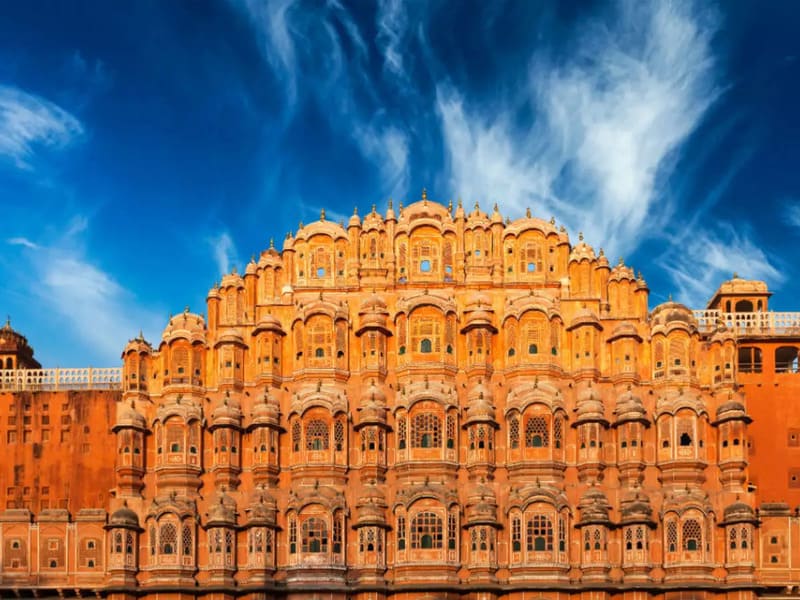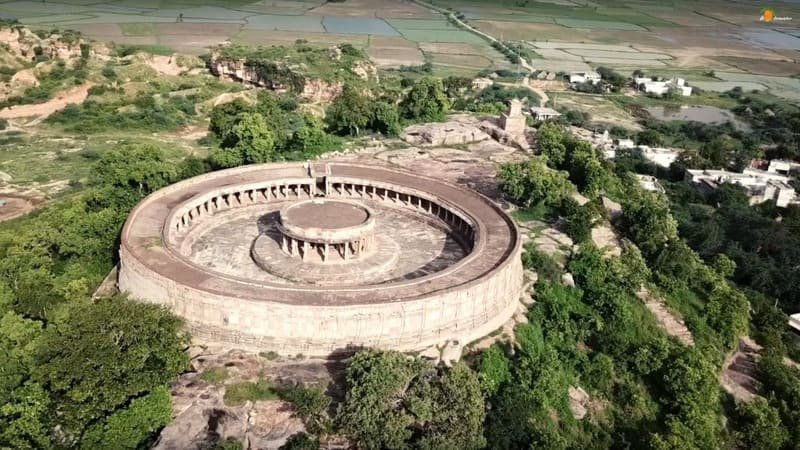
Hawa Mahal, Jaipur.
Hawa Mahal, Hawa Mahal Rd, Badi Choupad, J.D.A. Market, Pink City, Jaipur, Rajasthan 302002, India..
Hawa Mahal, also known as the "Palace of Winds," is one of the most famous and iconic landmarks in Jaipur, the capital city of the Indian state of Rajasthan. Built in the 18th century, the Hawa Mahal is a stunning example of Rajput architecture, and its unique façade, with its intricately carved windows and screens, has made it a symbol of Jaipur. In this blog, we will explore the history, architecture, and significance of the Hawa Mahal, as well as its many attractions and offerings.
History of the Hawa Mahal
The Hawa Mahal was built in 1799 by Maharaja Sawai Pratap Singh, the ruler of Jaipur at the time. The mahal was designed by Lal Chand Ustad, a renowned architect of the era, and was constructed using red and pink sandstone. The Hawa Mahal was built as an extension to the City Palace, which was the royal residence of the Jaipur rulers.
The Hawa Mahal was designed to allow the women of the royal household to observe the street festivals and processions without being seen by the public. The mahal has five floors, and its façade has 953 small windows, or jharokhas, which allow the breeze to flow through the building and keep it cool during the hot summer months.
Architecture of the Hawa Mahal
The Hawa Mahal is a unique and stunning example of Rajput architecture, which is known for its intricate designs, vibrant colors, and use of local materials. The mahal is built in the shape of a crown, and its façade is decorated with a variety of intricate designs and patterns, including floral motifs, geometric shapes, and animal figures.
The mahal has five floors, each of which is connected by a narrow staircase. The top floors of the mahal offer stunning views of the city, and visitors can see the various monuments and landmarks of Jaipur from the mahal's jharokhas.
Attractions and Offerings of the Hawa Mahal
The Hawa Mahal is a popular tourist destination, and it offers a range of attractions and offerings for visitors. Some of the highlights of the mahal include:
-
The Jharokhas: The Hawa Mahal has 953 small windows, or jharokhas, which are intricately carved and decorated. Visitors can explore the different floors of the mahal and see the various designs and patterns of the jharokhas.
-
The Museum: The Hawa Mahal also has a museum, which houses a collection of artifacts, paintings, and sculptures from the royal era. The museum offers visitors a glimpse into the history and culture of Jaipur and Rajasthan.
-
The View from the Top: The top floors of the Hawa Mahal offer stunning views of the city, and visitors can see the various monuments and landmarks of Jaipur from the mahal's jharokhas. The view from the top is especially beautiful during sunrise and sunset.
-
The Light and Sound Show: The Hawa Mahal also offers a light and sound show, which showcases the history and culture of Jaipur and Rajasthan. The show is held every evening, and visitors can experience the grandeur and splendor of the mahal in a new light.
-
The Bazaar: The Hawa Mahal is located in the heart of the city, and there are several markets and bazaars nearby. Visitors can explore the various shops and stalls and purchase souvenirs and handicrafts.
Significance of the Hawa Mahal
The Hawa Mahal is a significant landmark in Jaipur, and it holds great cultural and historical significance. Here are some of the reasons why the Hawa Mahal is considered an important monument:
-
Architectural Heritage: The Hawa Mahal is a unique and stunning example of Rajput architecture, which is known for its intricate designs, vibrant colors, and use of local materials. The mahal showcases the creativity and artistry of the Rajput craftsmen, and it is a testament to the rich architectural heritage of Jaipur.
-
Royal Legacy: The Hawa Mahal was built by Maharaja Sawai Pratap Singh, the ruler of Jaipur, and it was designed to allow the women of the royal household to observe the street festivals and processions without being seen by the public. The mahal is a symbol of the royal legacy of Jaipur and the Rajput rulers.
-
Cultural Identity: The Hawa Mahal is an iconic symbol of Jaipur and Rajasthan, and it reflects the cultural identity and values of the region. The mahal is a testament to the rich traditions and customs of Rajasthan, and it showcases the artistic and architectural achievements of the Rajput era.
-
Tourism: The Hawa Mahal is a popular tourist destination, and it attracts visitors from all over the world. The mahal is an important part of Jaipur's tourism industry, and it contributes to the economic growth and development of the region.
-
Educational Value: The Hawa Mahal houses a museum, which showcases the history and culture of Jaipur and Rajasthan. The museum offers visitors a glimpse into the rich cultural and historical heritage of the region, and it serves as an educational resource for students and scholars.
In summary, the Hawa Mahal is a significant landmark in Jaipur, and it holds great cultural, historical, and educational value. The mahal is a symbol of Jaipur's rich architectural heritage, royal legacy, cultural identity, and tourism industry, and it serves as a reminder of the artistic and architectural achievements of the Rajput era.








